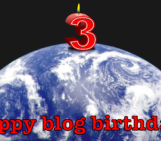
Fausto is very much preoccupied with subduction zones. The omphalos of his working life, or better yet, his paltry existence, he lacklusterly focuses on a single subduction zone. A proclivity for narrow-mindedness, surely. Yet there are ever so many to rejoice in. He thus warbles:
What is your favourite subduction zone?
Dear Fausto,
I can only think of that one little special place deserving the placard of sterling subduction zone: the New Britain subduction zone. And no … this is not a politically motivated answer. A majestically complex tectonic setting characterizes the New Britain subduction zone region (e.g., Baldwin et al. 2012). A stones throw NE of mainland Papua New Guinea you’ll find the Solomon Sea, plunging happily into the ol’, toasty mantle (Holm and Richards 2013). It’s just around the corner of the Solomon subduction zone at the San Cristobal trench and the now-defunct Trobriand Trough, barely juxtaposing the Woodlark Basin to the SE. A mere earshot from continental Australia, which geodynamicist would not be marveled by the lustrous luxury of beguiling intricacies at one’s fingertips (Holm et al 2013, 2016); subduction polarization (multiple ones???), slab tears, subduction segmentation, plateau subduction (multiple ones???), back-arc opening, rifting, (ceased) double sided subduction (multiple ones???). There’s simply too much to handle in one go. Besides all this, a little bird also told me one must be wary of the mega-thrust earthquakes that could occur any minute whilst knee-deep in your sweltering yet prosperous fieldwork. Forget about those well-studied subduction zones, with their Mw>9 mega-thrust earthquakes. Forget about low frequency tremors and spatio-temporal variable slow slip events. Forget about previously segmented subduction zones such as the old Farallon subduction, or the western Mediterranean arcs. Maybe, just maybe, you’ve now acquired an apt topic for your next grant proposal. Merry exploring!
Yours truly,
The Sassy Scientist
PS: This post was written in a subduction-free time. Mollifying as it is, such subduction-free time alleviates any and all disconcertment. Shouldn’t you detox every once in a while?
References: Baldwin, S.L., Fitzgerald, P.G., Webb, L.E. (2012), Tectonics of the New Guinea Region. Annual Review of Earth and Planetary Sciences, 40, dot:10.1146/annurev-earth-040809-152540 Holm, R.J., Richards, S.W. (2013), A re-evaluation of arc-continent collision and along-arc variation in the Bismarck Sea region, Papua New Guinea. Australian Jounral of Earth Sciences 60, 605–619 Holm, R.J., Rosenbaum, G., Richards, S.W. (2016), Post 8 Ma reconstruction of Papua New Guinea and Solomon Islands: Microplate tectonics in a convergent plate boundary setting. Earth-Science Review, 156, 66-81, http://dx.doi.org/10.1016/j.earscirev.2016.03.005 Holm, R.J., Spandler, C., Richards, S.W. (2013), Melanesian arc far-field response to collision of the Ontong Java Plateau: geochronology and petrogenesis of the Simuku Igneous Complex, New Britain, Papua New Guinea. Tectonophysics 603, 189–212




